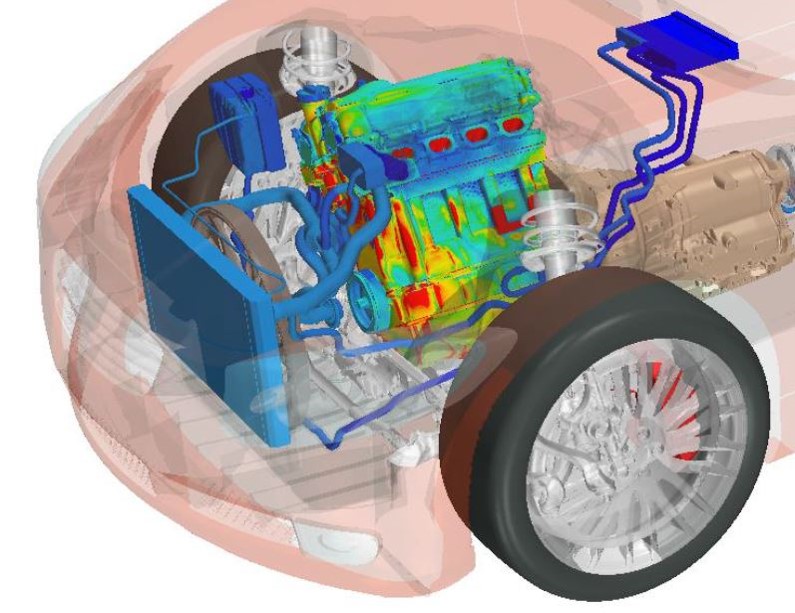ThermoAnalytics and Gamma Technologies are pleased to announce the first phase of integration with TAITherm and GT-SUITE simulation tools. As you may know, TAITherm is our industry-leading thermal analysis code, and GT-SUITE is a multi-physics tool that employs both 1D and 3D methodologies to solve complex integrated subsystem problems. By coupling these tools, simulation teams can now understand the full-vehicle thermal relationships at a level of integration and computation speed that was previously unfeasible. Because both software tools are already employed globally by vehicle and aerospace OEMs, this coupling represents a substantial value increase to numerous simulation teams worldwide.
subsystem problems. By coupling these tools, simulation teams can now understand the full-vehicle thermal relationships at a level of integration and computation speed that was previously unfeasible. Because both software tools are already employed globally by vehicle and aerospace OEMs, this coupling represents a substantial value increase to numerous simulation teams worldwide.
The coupling of these codes is focused on the core thermal simulation scenarios facing vehicle manufacturers today. It is a coupling that is already fully integrated into both tools, which make the coupling process almost turnkey in nature. In this initial coupling for HVAC and vehicle cabin design, an AC pull-down serves as our example case, representing a common challenge for vehicle OEMs.
TAITherm provides the transient natural environment, including multi-band radiation, conduction, and glass transparency, with focus on surfaces and solid objects. GT-SUITE provides simulation of the entire vehicle including the controls and HVAC subsystem, as well as a 3d voxel-based 3-dimensional representation of fluid flow throughout the cabin, including humidity. Using this approach, the power of both tools is maximized and computation speeds far exceeds other approaches, such as using CFD for cabin flow.
GT-SUITE receives surface temperatures from TAITherm and provides element-level convection based on the voxelized fluid flow distribution. The data are exchanged at pre-defined intervals to ensure that gradients are captured between the tools and energy is conserved. This closely-coupled integration can be extended to include TAITherm’s Human Thermal Extension, capturing effects of component selection (e.g. HX), control strategies and AC loads on passenger sensation and comfort. The entire simulation would thus link the “value” of passenger comfort to the “cost” of various system-level design parameters and overall fuel efficiency through the integrated vehicle and powertrain model.
The computational speed of this coupling also allows for increased leveraging of simulations earlier in the design process, yielding more answers, faster than ever before. Of course speed is not valuable without accuracy, so the next question becomes, “How accurate is this approach?” That is the focus of our next blog entry, where we’ll put GT-SUITE and TAITherm to the test, comparing with measured values of an actual vehicle cabin through an AC pull-down. Stay tuned, and start planning your system-level approach to cabin modeling.
This blog was developed in conjunction with Dan Marsh from Gamma Technologies. Dan has worked at GT since the summer of 2010. Dan is a senior engineer and application leader for climate systems simulations within GT-SUITE. His responsibilities in this area include managing development, customer support and trainings. Dan also handles development planning for the main model building graphical application within GT-SUITE.
